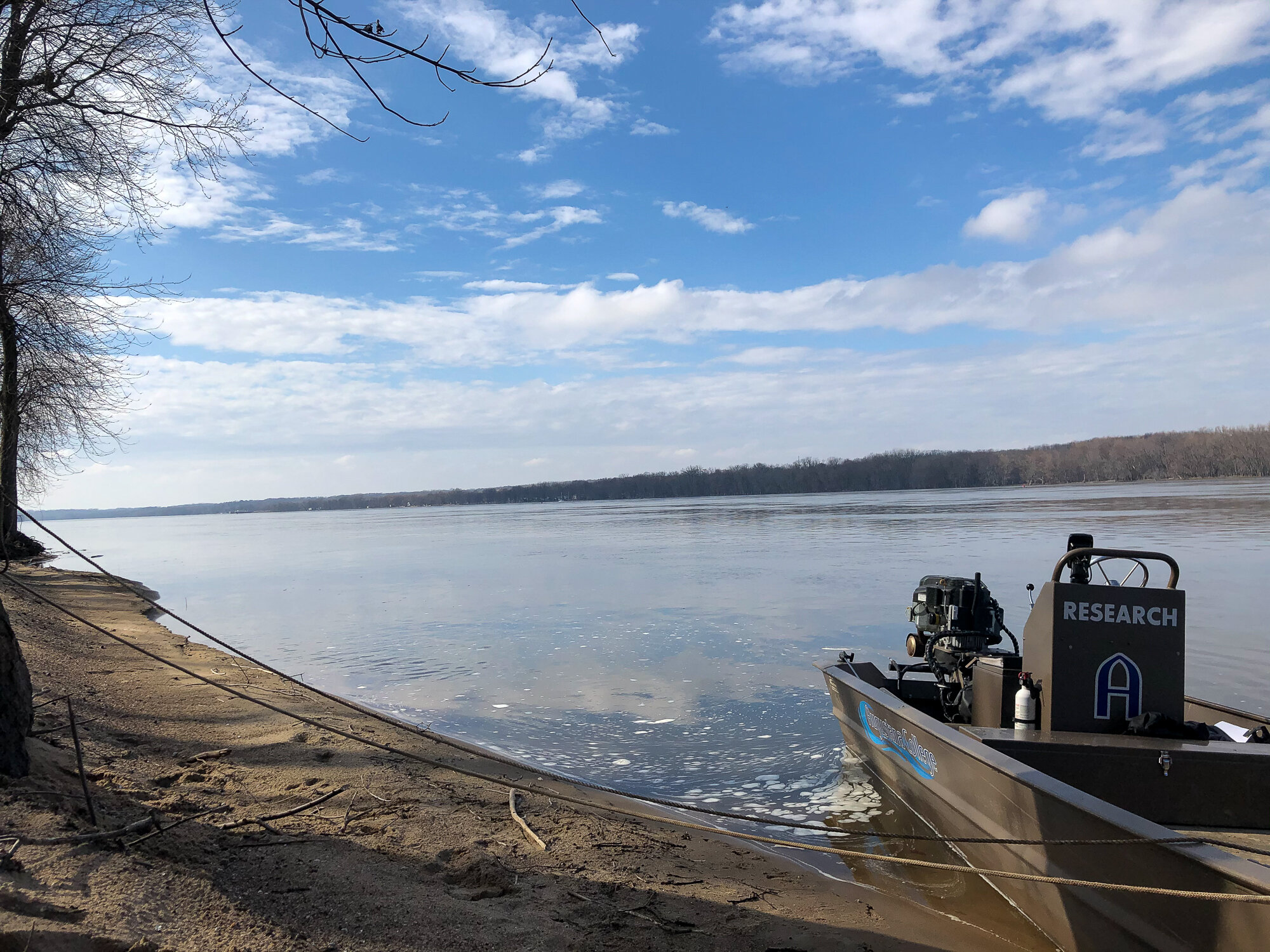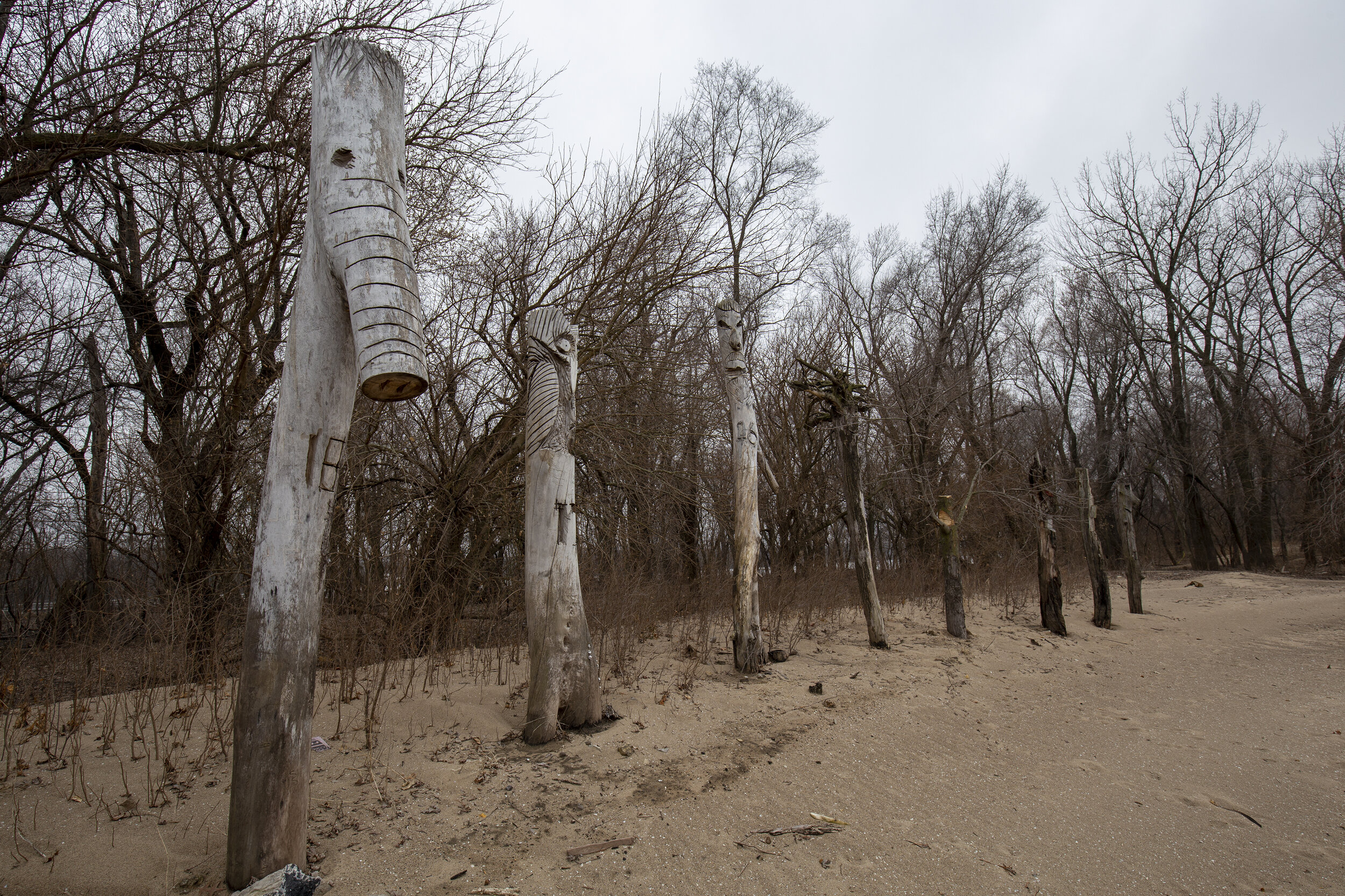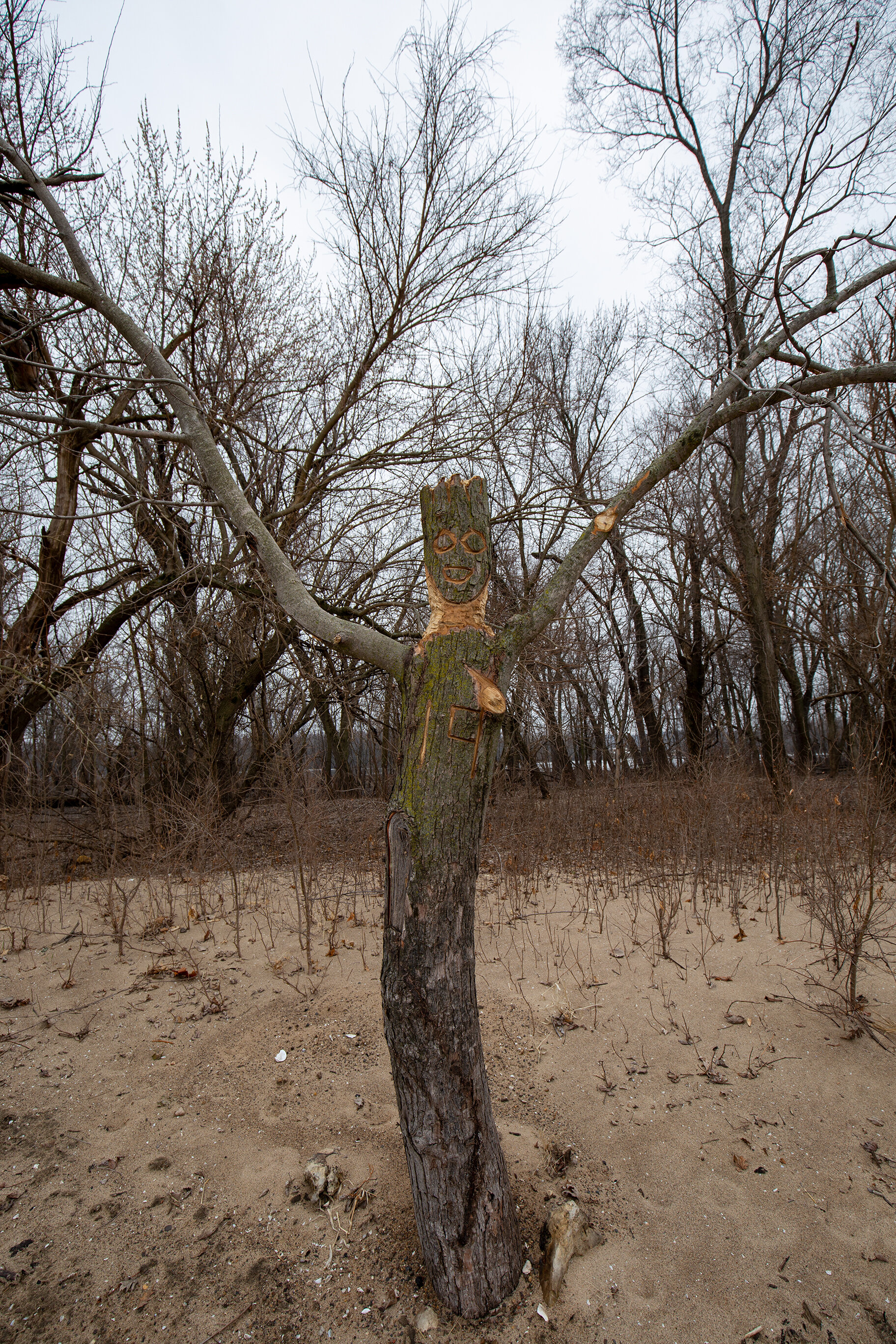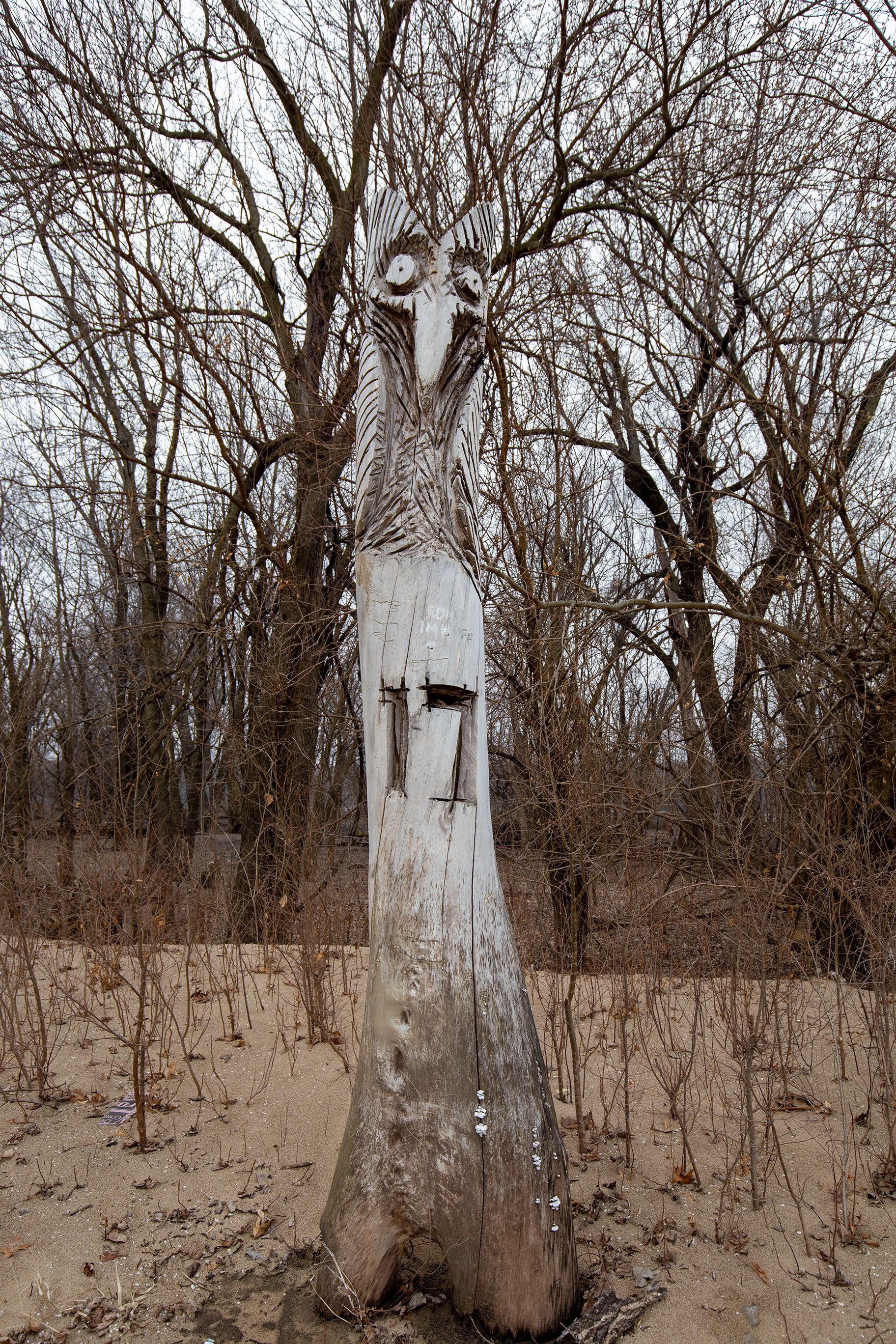At the Edge of a Working River: Photo sets 121-70 and 1645. Pool 16. Andalusia Island.
The Upper Mississippi is a working river. Its course has been constrained and trained in order to complete that work. Yes, it provides habitat and performs the hydraulic function of erosion and deposition; It is home to hundreds of species of aquatic life; It provides water for cities; It steadily and stolidly drains the continent; It does all that work.
As the ice usually breaks up in early March the Mississippi’s other work becomes evident. Barges line the river channel in Pool 16 waiting for floes to break apart and open the path to the Upper Mississippi’s northern reaches. Army Corps of Engineers dredge boats scoop sand and shells from the channel bottom. They deposit the “spoil” on pre-determined islands and shorelines. Diesel tows begin to push loads of grain, rock, coal, scrap, and fertilizer - on average of 175 million tons a year - up and down the Upper Mississippi River. It’s a billion dollar industry and it is made possible by a series of 29 locks and dams, wing and closing dam training structures, and a flotilla of dredge boats that artificially keep the river high and the main channel deep. It’s made possible by the 9-foot project.
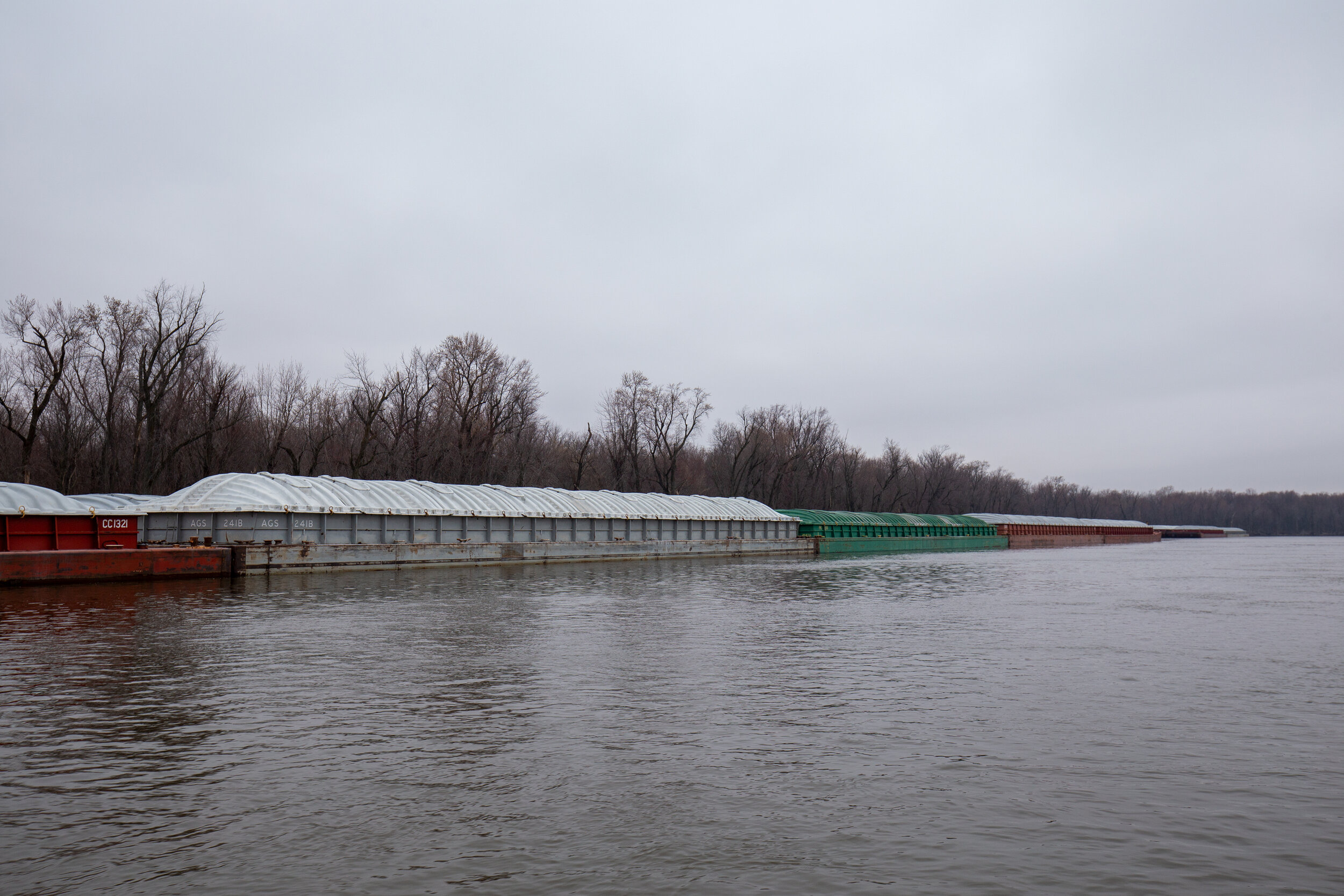
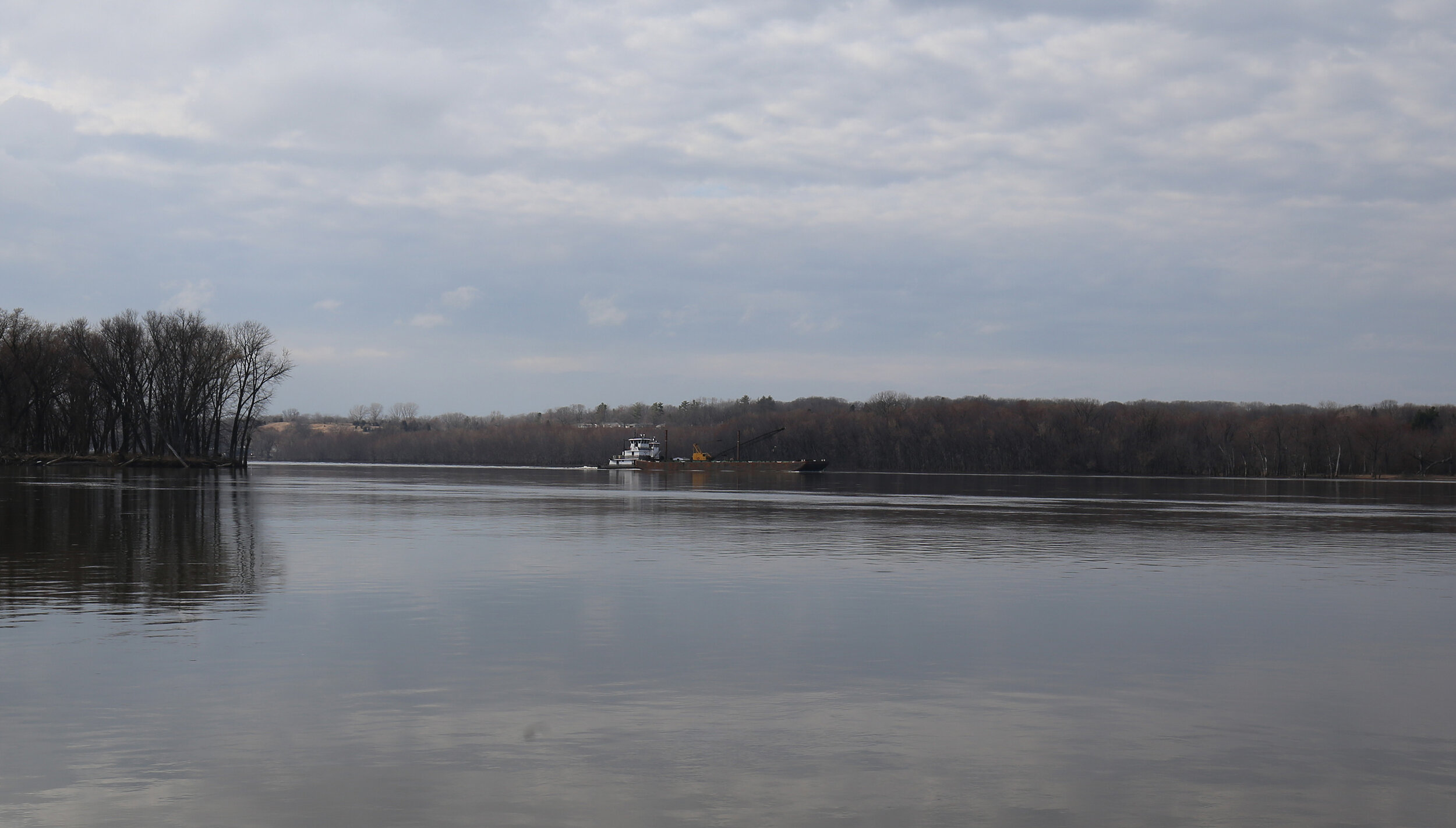
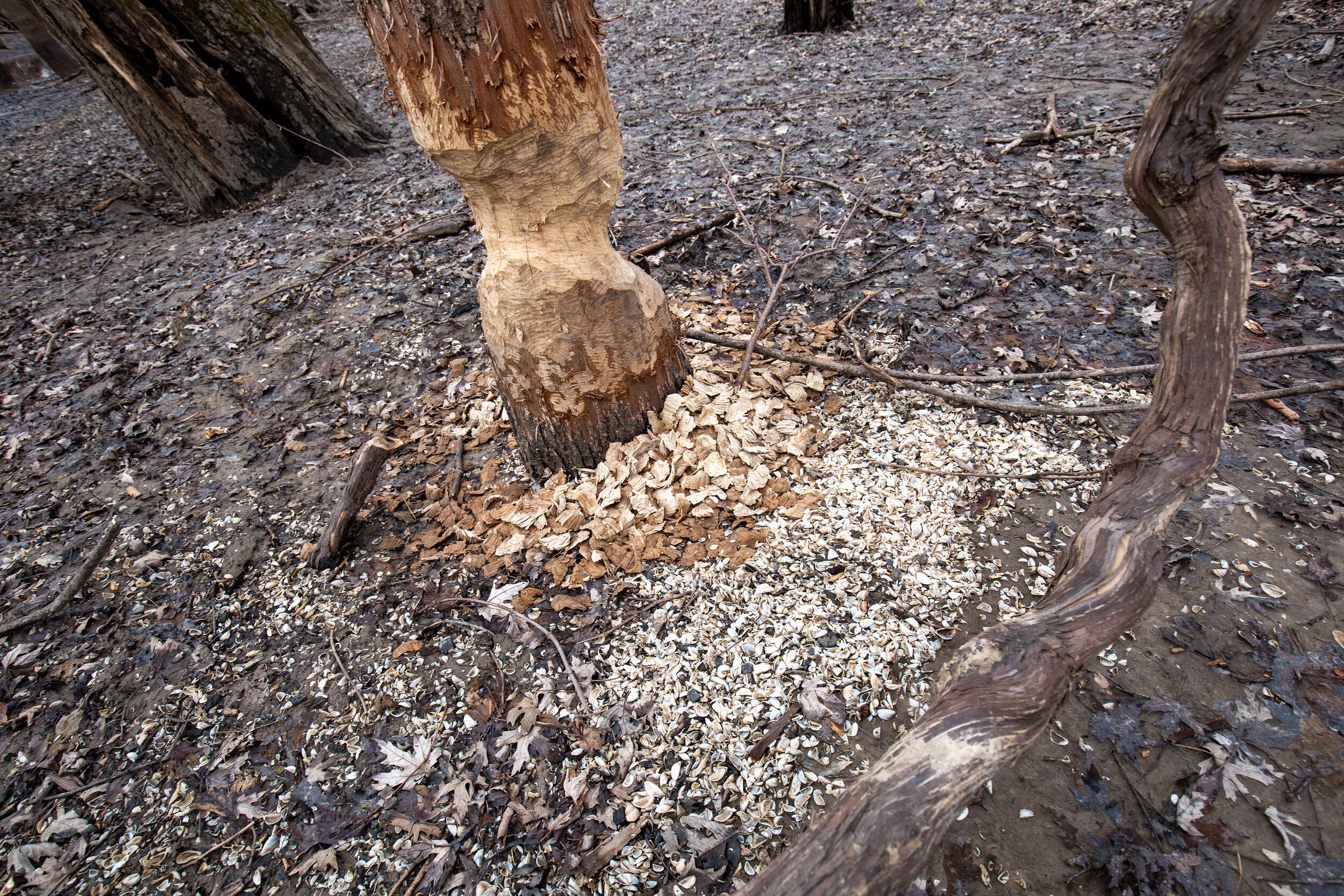
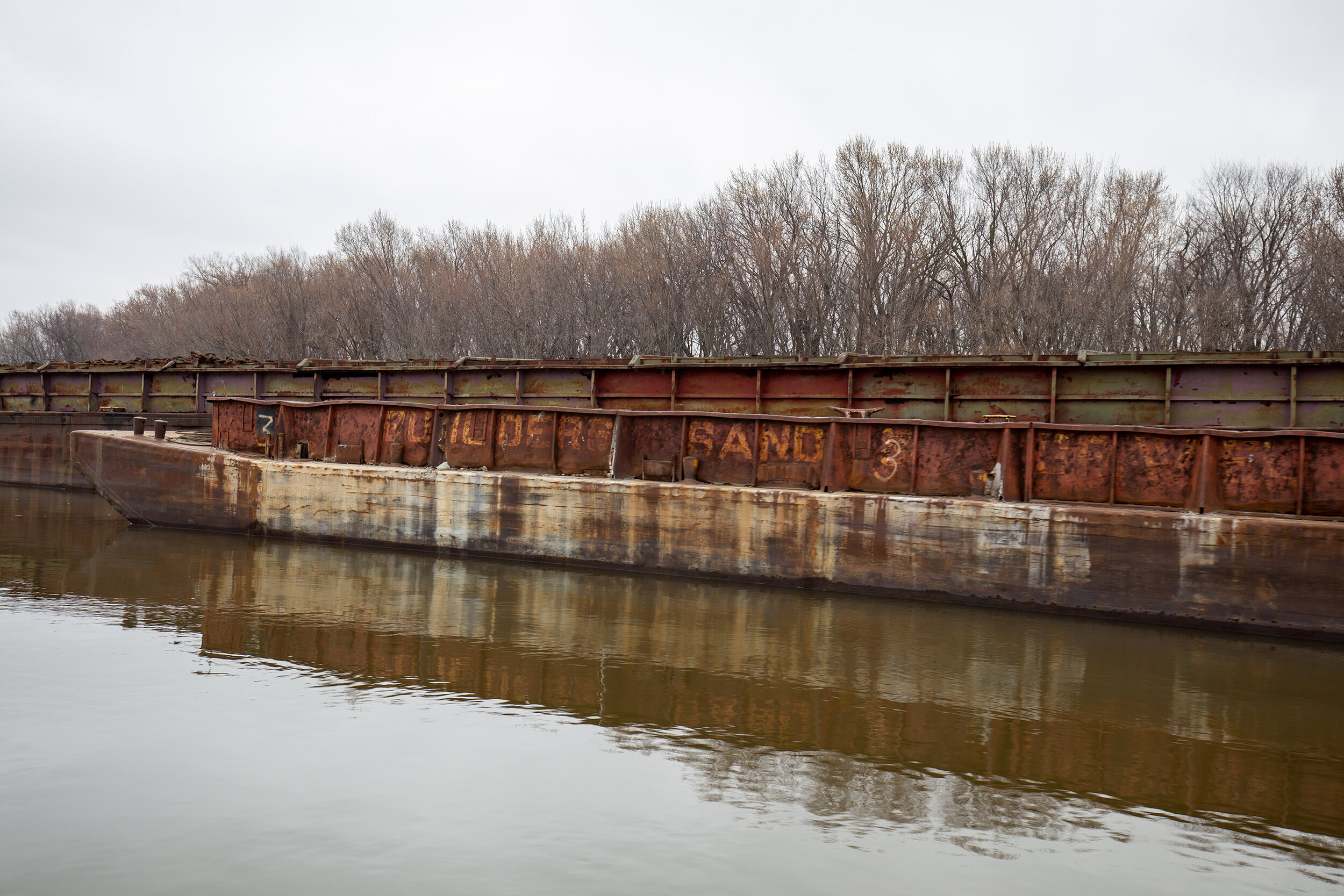
Take Aways:
Changing Land: Shoreline Recession. Here, at the edge of this working river’s main channel, we see the 9-foot project’s dramatic transformational ability. High water covers islands and shorelines. Hundreds of tows push thousands of tons of commodities past these islands every year. The combined wave action has a significant toll.
It eats islands.
The channel side of nearly every Upper Mississippi island is eroding at an extraordinary rate. From a habitat perspective, this could be considered a moderate disaster. It’s problematic for the Corps- islands disintegrate filling the channel with sand, silt, and trees. The work of maintaining the channel creates a need for channel maintenance.
Blended Photo 18-121-70
Land Use: Recreational Landscapes - Before the 9-foot project small cabins and cottages dotted Andalusia Island’s shorelines and sloughs. The water was shallow enough in the winter time to allow vehicle traffic from the mainland to the islands and the Quad Cities were close by. The islands offered a respite from city smoke and sounds.
No cabins exist on the island chain today. Island erosion and frequent flooding make that kind of land use impossible. However the islands and sloughs are still frequented by recreational users from the Quad Cities for hunting and fishing. The Army Corps piles dredge material along shorelines to make beaches - home to many impromptu summer celebrations and sometimes strange celebrants.
